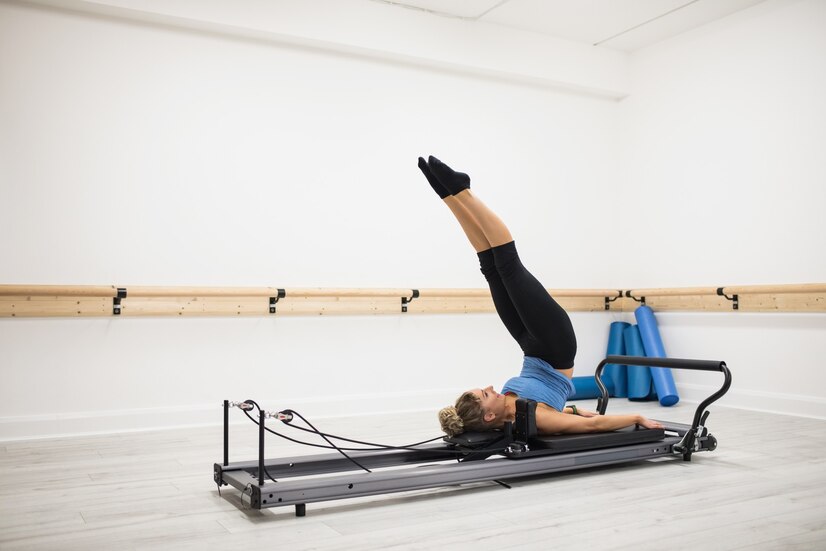Adjustable Parallel Bars

Adjustable parallel bars are versatile rehabilitation and fitness equipment commonly used in physical therapy clinics, rehabilitation centers, and fitness facilities. These adjustable bars provide a stable platform for various exercises and activities aimed at improving balance, strength, coordination, and mobility. They offer adjustable height and width settings to accommodate individuals of different heights, abilities, and therapeutic goals.
Benefits
Rehabilitation and Physical Therapy: Adjustable parallel bars are widely used in rehabilitation settings to assist individuals recovering from injuries, surgeries, or neurological conditions. They provide support and stability during gait training, balance exercises, and functional activities, helping patients regain mobility and independence.
Gait Training: Parallel bars are essential for gait training exercises, allowing patients to practice walking, stepping, and weight shifting with support and assistance. The adjustable height feature enables therapists to customize the bars’ height to match the patient’s level of function and gait pattern.
Balance and Coordination: Parallel bars are effective tools for improving balance and coordination through various static and dynamic exercises. Patients can perform weight-shifting activities, tandem walking, and single-leg stance exercises while holding onto the bars for support and stability.
Strength and Endurance: Adjustable parallel bars facilitate strength-building exercises for the upper and lower extremities. Patients can perform upper body exercises such as push-ups, dips, and shoulder presses, as well as lower body exercises like squats, lunges, and step-ups, using the bars for support and resistance.
Fall Prevention: Parallel bars provide a safe environment for individuals at risk of falls to practice balance and mobility exercises under supervision. The adjustable height feature allows therapists to gradually increase the challenge as patients progress, helping reduce the risk of falls and improve confidence in walking and daily activities.
Features
Adjustable Height: The height of the parallel bars can be easily adjusted to accommodate users of different heights and functional abilities. This feature allows therapists to customize the bars’ height for optimal support and safety during exercises and activities.
Adjustable Width: Some models of adjustable parallel bars offer the option to adjust the width between the bars to accommodate users with varying body sizes and gait patterns. This feature enables therapists to create a comfortable and stable environment for gait training and balance exercises.
Sturdy Construction: Adjustable parallel bars are constructed from durable materials such as steel or aluminum to provide stability and support during use. Non-slip rubber feet or floor-mounted bases ensure secure placement on various surfaces, preventing slipping or sliding during exercises.
Handrail Padding: Many adjustable parallel bars feature padded handrails for comfort and grip support during exercises. The padding helps reduce pressure on the hands and wrists, especially during weight-bearing activities and prolonged use of the bars.
Foldable and Portable: Some models of adjustable parallel bars are designed to be foldable and portable, allowing for easy storage and transportation between therapy sessions or fitness facilities. This feature enhances versatility and convenience for users and therapists alike.
Applications
Physical Therapy Clinics: Adjustable parallel bars are commonly used in physical therapy clinics for rehabilitation and gait training programs tailored to individuals recovering from orthopedic injuries, neurological conditions, or mobility impairments.
Rehabilitation Centers: Rehabilitation centers utilize adjustable parallel bars as essential equipment for comprehensive rehabilitation programs focusing on balance, gait, strength, and mobility enhancement for patients with various medical conditions or injuries.
Fitness Facilities: Adjustable parallel bars are integrated into fitness facilities and gyms to offer functional fitness training, bodyweight exercises, and strength-building workouts for individuals seeking to improve overall fitness and performance.
Senior Care Facilities: Senior care facilities incorporate adjustable parallel bars into fall prevention programs and rehabilitation services for older adults to enhance balance, mobility, and independence, reducing the risk of falls and promoting active aging.
Home Use: Some individuals may opt to purchase adjustable parallel bars for home use, especially if they are undergoing long-term rehabilitation or wish to continue therapeutic exercises independently between therapy sessions.
Adjustable parallel bars are versatile and indispensable tools for rehabilitation, fitness, and fall prevention programs aimed at improving mobility, strength, and quality of life for individuals of all ages and abilities. With their customizable features, sturdy construction, and wide range of therapeutic applications, adjustable parallel bars play a valuable role in promoting functional independence and well-being for users in various healthcare and fitness settings.


